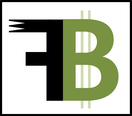 “Would you like to add chicken to your Caesar Salad?” “New York Strip, great choice. Shall we complement it with some mashed potatoes or sautéed spinach?” “Can I interest you in our famous Lava Cake for dessert?” These classic upsell examples can become a server’s bread and butter, presenting a theoretical win-win for all parties involved. Customers enjoy a greater extent of the restaurant’s offerings, the restaurant boosts its revenue, and of course the server makes that extra tip money. Most business-savvy restaurants will train their service staff, from busboys to servers and bartenders, on the art of the upsell to accomplish these exact objectives. But how far can you push the upsell? Upsell too little and you leave money on the table. Upsell too much and you will leave guests upset…sometimes very upset, to the point where they could lose trust in their server, and perhaps in the restaurant as a whole. Recently, I was one of those very upset customers, at a restaurant in Colorado. Our server had dollar signs in his eyes upon seeing our large group. We asked for his appetizer recommendations and he listed the three most expensive items in the category. He did the same with the entrées. We ordered several bottles of wine, and upon ordering another round he suggested some new Merlots that were ‘just five dollars more.’ He suggested dessert, and when we said no he still brought out the menus, making sure to ask again when collecting them back several minutes later. Needless to say, this is an extreme [but sadly, true] example of pushing the upsell too much. So how do you know where to draw the line? There is no magic formula, but the best way is to do what great restaurants do best: know your customer. 1. Understand the mood Read the customers’ body language as soon as they set foot inside. Do they seem happy? Do they appear to be in a rush? Is there any tension among the group? Are they here to celebrate? To do business? Different moods will certainly make customers more open or closed to upsell opportunities. Take in the customers’ tone when you first speak with them. When appropriate, try to work the reason why they’re dining with you into your opening conversation. This should clarify some of the above questions and set your next moves. Are they smiling when they speak with you? Are their responses open and amiable, or short and terse? The warmer the opening conversation, the more open to upsell the group will likely be. Opening communication among your service staff is a great way to read your customers while minding their privacy. Hostesses can pick up signs and communicate them with servers. Busboys can get bits and pieces of conversation that servers don’t have the opportunity to listen into. Sometimes the mood can change among the group mid-meal, and increased communication can allow servers to capitalize on newly-available upsell moments. 2. Always upsell at least once, and choose wisely Few customers, no matter how cold they may appear, can fault a server for trying to upsell them at least once throughout the meal. Note that this means just one upsell among the entire group, not per person. If that upsell converts, then another upsell is fair game and the process continues. The key comes with choosing when to plug in that upsell. Try to identify the person at the table who is most likely to convert. This will likely be the most outgoing member of the group or the member who looks like they will be taking care of the check. If your first upsell is a miss, it’s fair to try at least once more, but be sure to wait a bit [at least another course] before making another attempt. Additionally, unless your guests have clearly expressed that they’re in a rush, always offer coffee and dessert before bringing the check. 3. Recommend items across a broad price range Menu recommendations are a make-or-break garnering trust. If a customer asks your favorite entrées and you point them to the priciest choices, they will notice, and you are at risk for losing their trust altogether. When giving recommendations, speak from the heart and let them know what you truly think about the menu. Even if you lead them to order a less-expensive entrée, you’ve got points in their book and are better positioned to get them to order more sides, a dessert, or even specifically request you as their server the next time they visit.
0 Comments
Leave a Reply. |
AuthorBenjamin Brown is a seasoned restaurant writer and hospitality consultant, serving up SoCal's hottest food news and reviews. Categories
All
Archives
June 2021
@Foodie_Biz |
|
Home
About
Blog
Consulting Tips
Contact
Legal
|
Foodie Biz provides restaurant news and reviews for the food community, as well as consulting advice for restaurant owners and other hospitality professionals.
Contact Foodie Biz for media opportunities and freelance consulting projects. Contact Foodie Biz |



